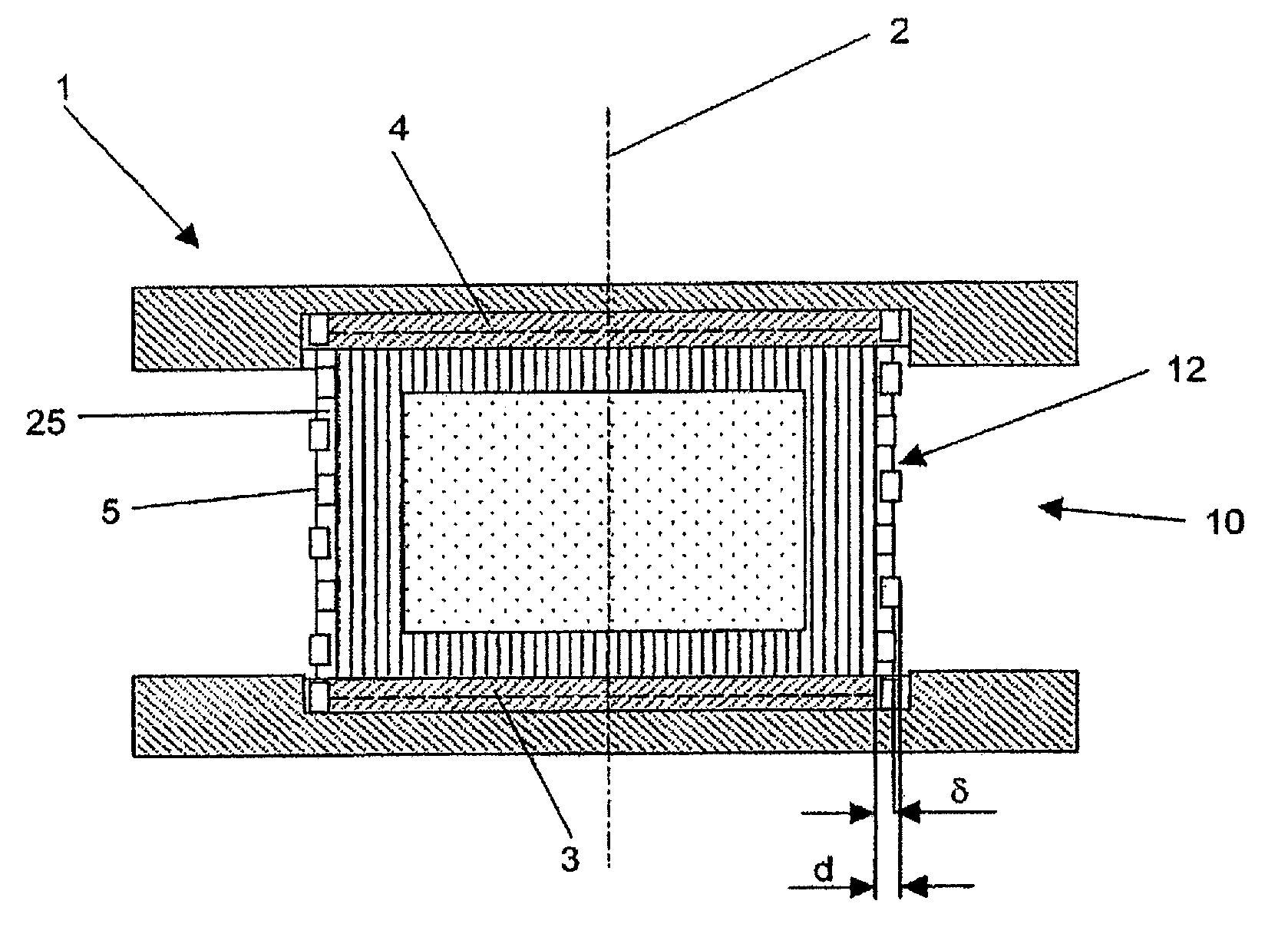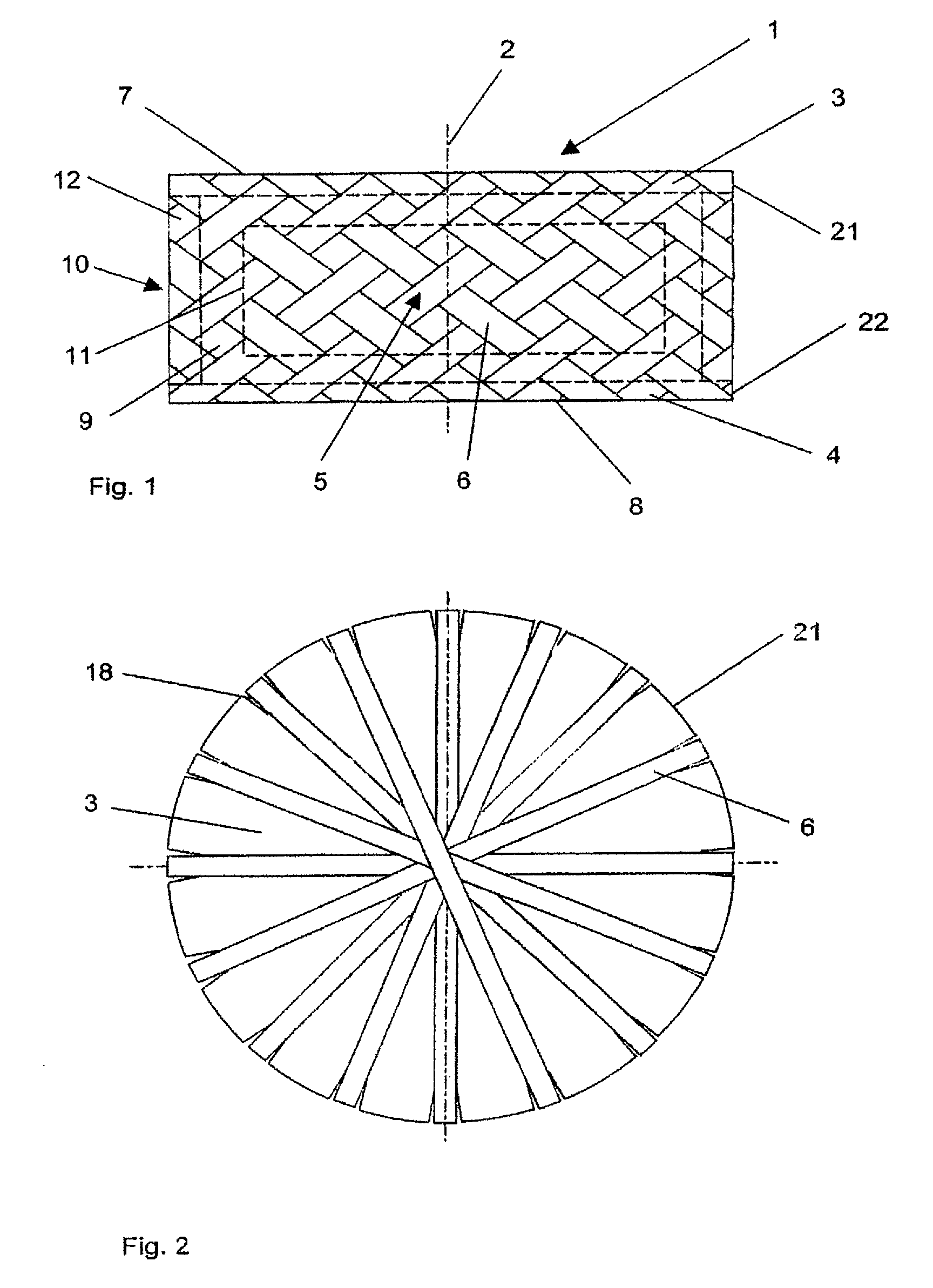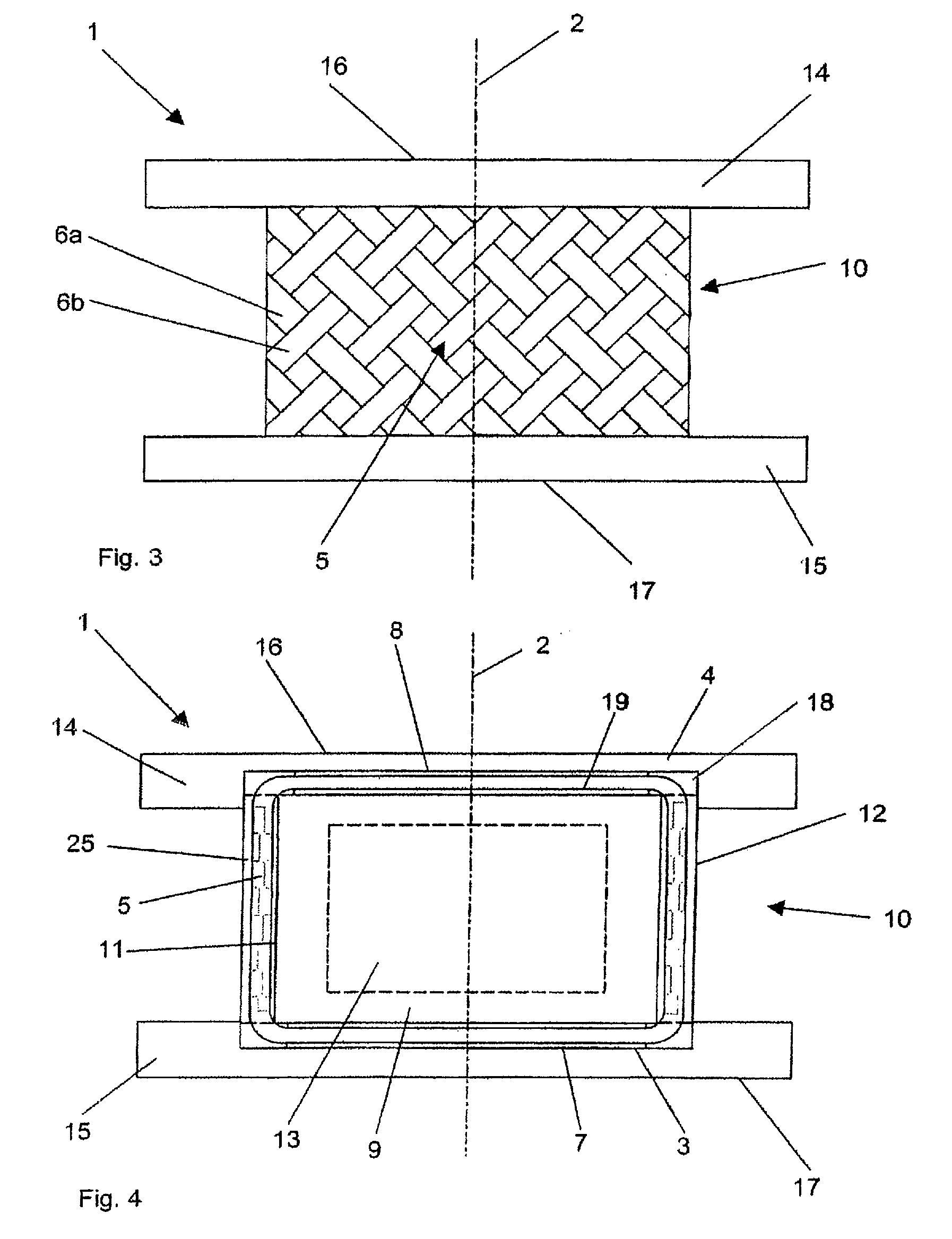Intervertebral implant
a technology of intervertebral implants and stents, which is applied in the field of intervertebral implants, can solve the problems of inability to accept tensile force, inability to join the fibre system with the cover plate, and difficulty in fixing the integrated fibres on the end plate, etc., and achieves the effect of less danger of fissure formation in the sheathing body, limited disadvantage of central buckling, and easy insertion
- Summary
- Abstract
- Description
- Claims
- Application Information
AI Technical Summary
Benefits of technology
Problems solved by technology
Method used
Image
Examples
Embodiment Construction
[0058]FIGS. 1 and 2 illustrate an embodiment of the intervertebral implant 1 according to the invention, that comprises a top cover plate 3 and a bottom cover plate 4, each with an external surface 7, 8 extending at right angles to the central axis 2 and having a lateral surface 21, 22 on the periphery. Between the cover plates 3, 4 there is a central part 10 provided with a central cavity 11 and a sheathing 12, that surrounds the fibre system 5. For the purpose of anchoring the fibres 6 of the fibre system 5 on the cover plates 3, 4, each of the peripheral lateral surfaces 21, 22 has grooves 18, distributed on the circumference and radially protruding into the lateral surfaces 21, 22, so that the fibre system 5 can be anchored in these grooves 18. In the central cavity 11 there is an elastically deformable formed body 9 with an incompressible core, preferably a liquid core 13. Due to the incompressibility of the liquid core 13 during a compression of the cover plates 3, 4 parallel ...
PUM
| Property | Measurement | Unit |
|---|---|---|
| angles | aaaaa | aaaaa |
| angles | aaaaa | aaaaa |
| angles | aaaaa | aaaaa |
Abstract
Description
Claims
Application Information
 Login to View More
Login to View More - R&D
- Intellectual Property
- Life Sciences
- Materials
- Tech Scout
- Unparalleled Data Quality
- Higher Quality Content
- 60% Fewer Hallucinations
Browse by: Latest US Patents, China's latest patents, Technical Efficacy Thesaurus, Application Domain, Technology Topic, Popular Technical Reports.
© 2025 PatSnap. All rights reserved.Legal|Privacy policy|Modern Slavery Act Transparency Statement|Sitemap|About US| Contact US: help@patsnap.com



